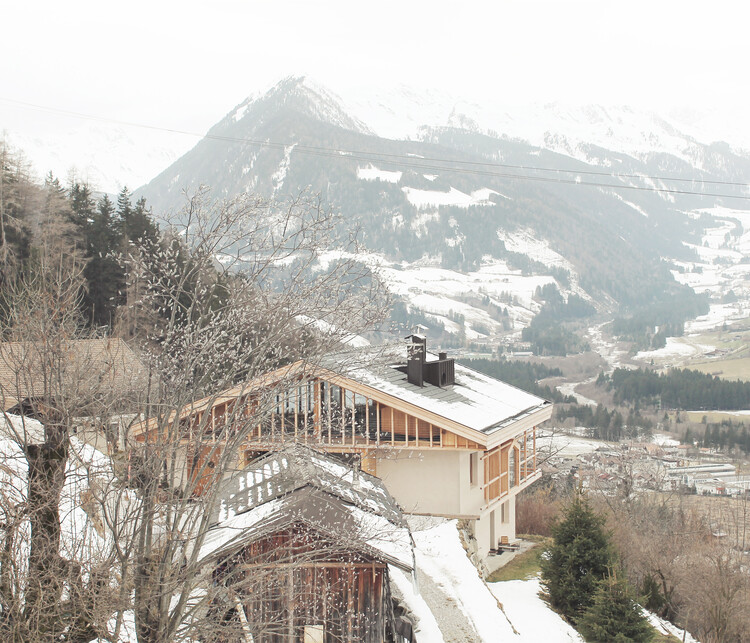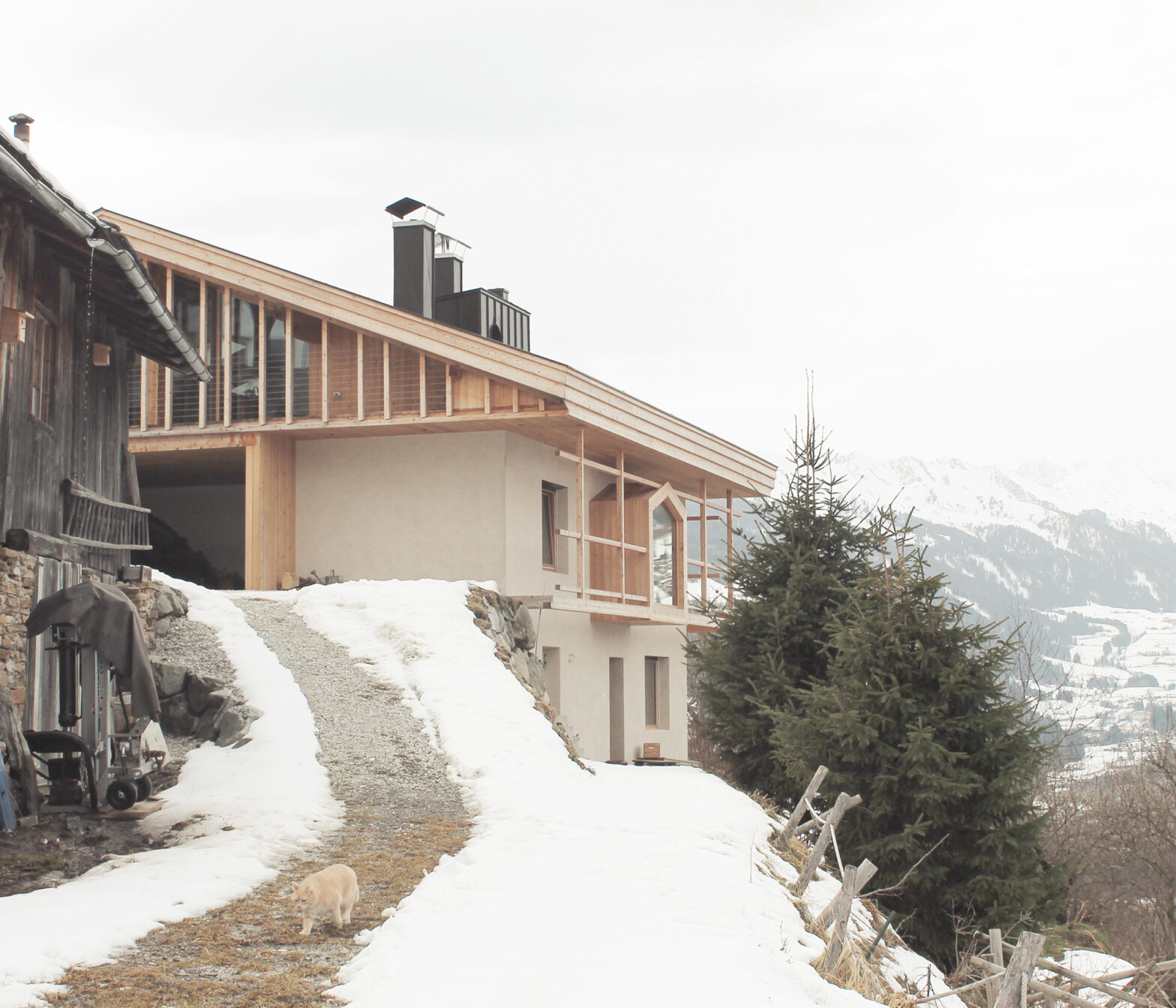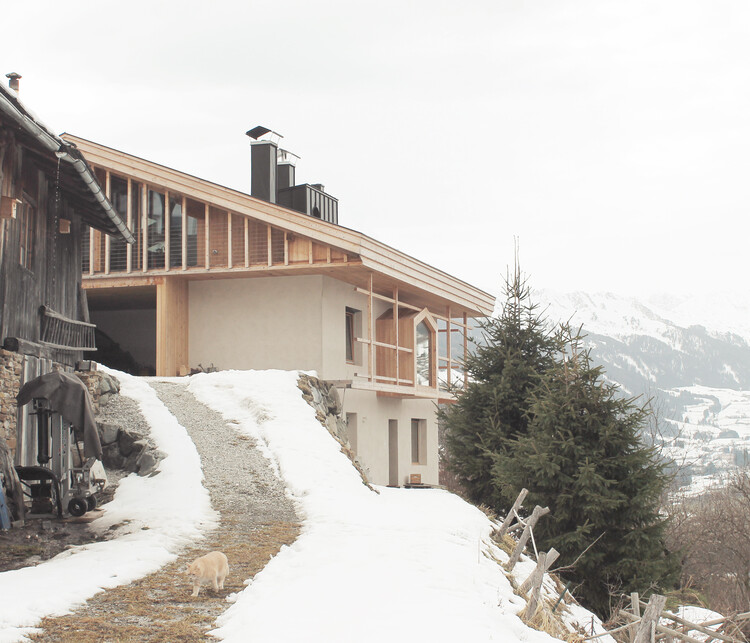
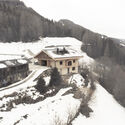
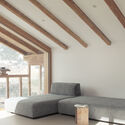
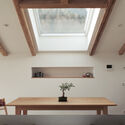
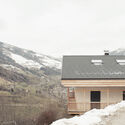

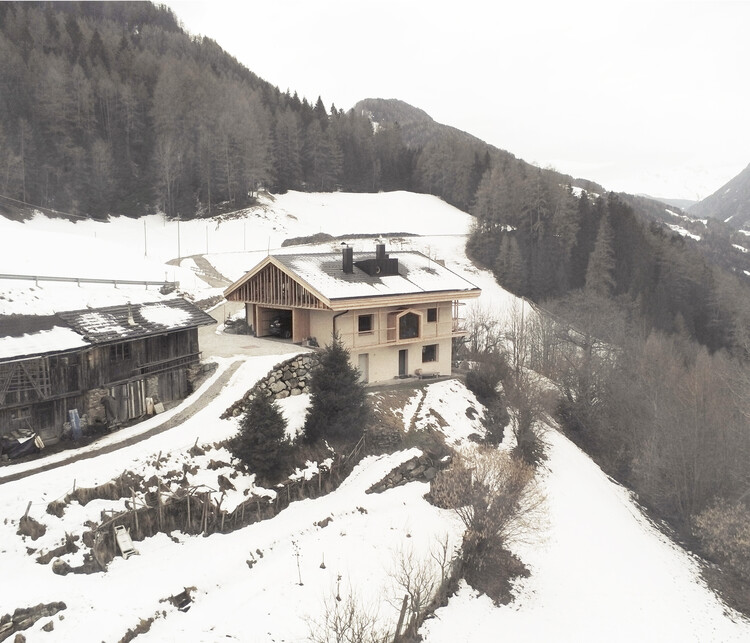
Text description provided by the architects. From Racines you can look down on Vipiteno from above. Here the architecture fits seamlessly into a striking alpine landscape; The built environment concerns a measured dialogue with the mountains and respects centuries -old building traditions that are rooted in an intelligent economy of resources, and an innate ability to adapt to the hardest winter. In this context, there is an old farmhouse, the topic of our intervention, soon the home of Lisa and Bert.
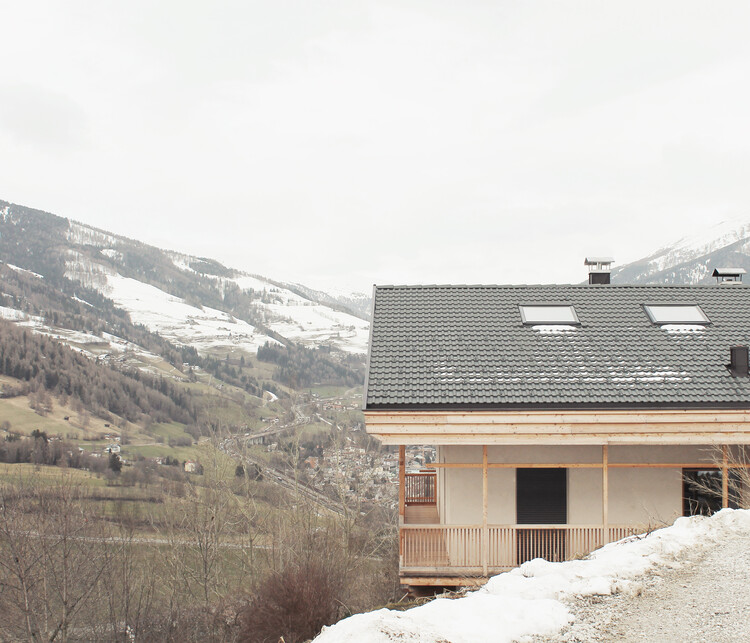
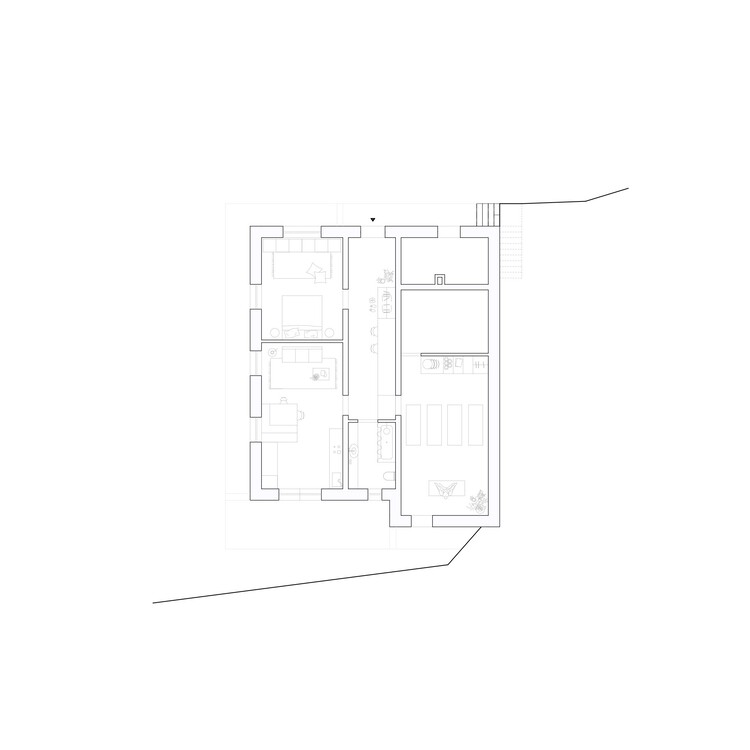

Existing conditions – the project revolves around the renovation of a traditional farmhouse that sits in a landscape in which the balance between firm and empty, built and of course defines the quality of life. This is a typical alpine farmhouse, which is marked by solid stone walls and a double wooden roof. Its internal layout reflects the typological organization of rural alpine apartments: the ground floor is primarily living, while the attic room traditionally serves as a storage and supply room. The floor plan follows a three -part layout that is structured around a central core. A characteristic feature of farmhouses in this valley is the Hayloft, which is integrated directly into the main volume of the residential buildings. Now outdated in its original function, it offers considerable potential for new uses. The project's challenge is to intervene without disturbing the existing balance – the essence of the farmhouse, preserving its history and at the same time enabling new life.
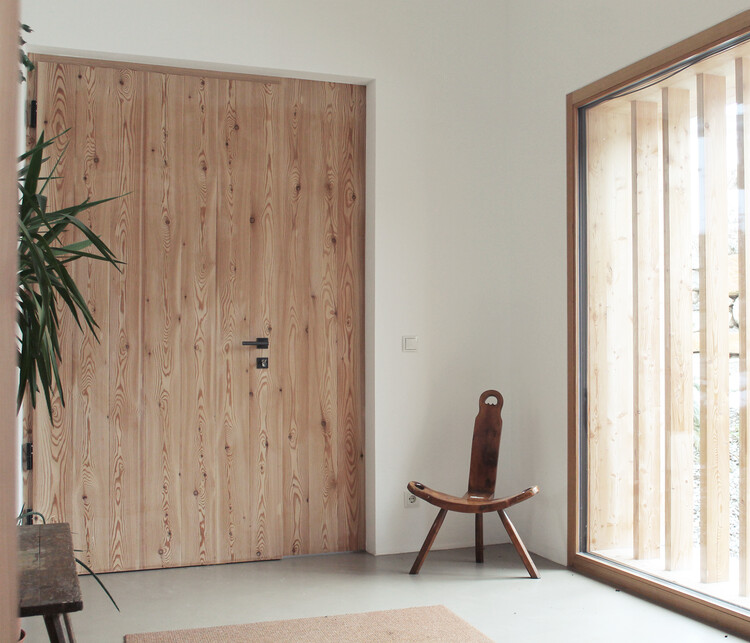
Vision and Functional Program – Lisa and Bert, a young couple, imagine a home that is deeply and open to new ways of life both in tradition. They dream of a room that improves their connection to the landscape and enables seamless transitions between interior and free – a home that brings intimate rooms into harmony with large openings towards the alpine result. The program demands the division of the building into two different residential units: a holiday apartment on the lower floor and the main residence that extends on the ground floor and attic. An important selection of designs is the reversal of conventional life agreements that exert the main living area in the attic in order to use the height and the natural light and to create open panorama rooms.
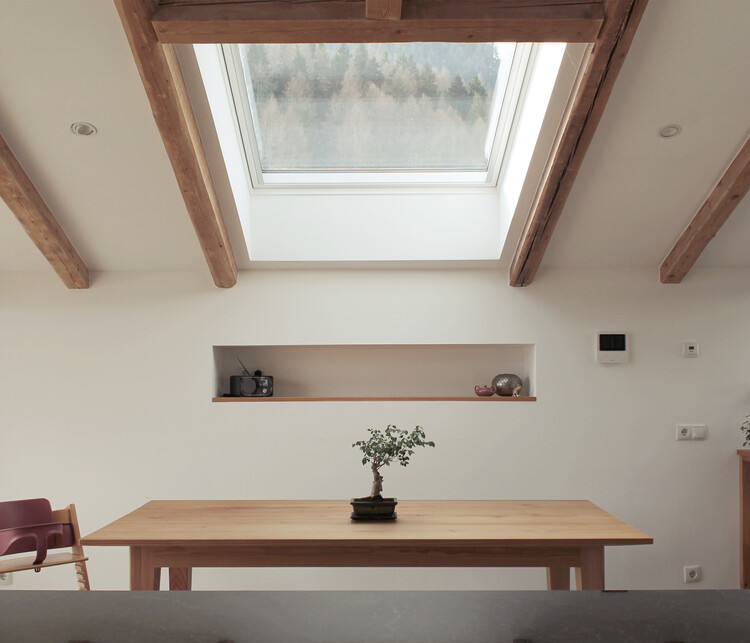
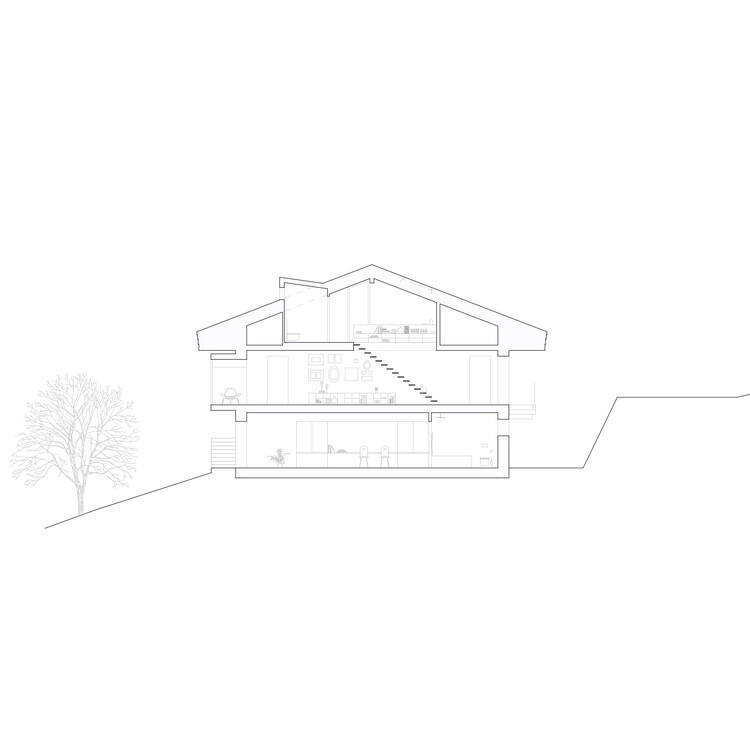
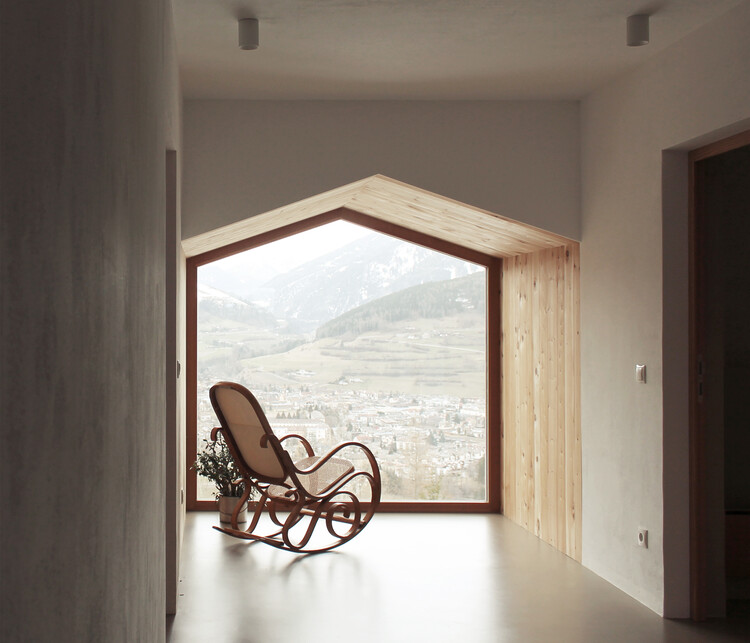
Design approach – The project is based on a reinterpretation of traditional peasantry typology, whereby the primary structural elements retain and at the same time reorganized the interior with a fresh spatial logic. The renovation of the existing building is designed as a continuity act – a transformation that renewed without deletion, reinterpreted form and function through a contemporary lens and at the same time preserves the constructive memory of the place. The ground floor houses the bedrooms, which are designed as protected, intimate rooms, while the attic is dedicated to the living area and is closely connected to the surrounding landscape as a liquid, open space. The intervention on the Hayloft creates a new threshold between the house and outside and offers covered parking spaces and a spacious entrance area. A light wooden staircase leads into the upper level, where the kitchen and the living room merge into a single, slightly filled room that is crowned by a rhythmic sequence of exposed rays that increase the spatial perception. The opposite loggias and fully glazed gable frame breathtaking views of the mountain landscape. Strategically placed skylights ensure carefully calibrated zenithe lighting and strengthen the connection of the house to the sky. A reader (a reading wind window) on the first floor serves as a cozy retreat and offers a hanging view over the valley. New balconies with slim steel cable railings stretch along the east and west facades and create protected outdoor areas that open directly in the alpine landscape. A sequence of vertical wooden slats, which are arranged in a dynamic rhythm, creates a game of solid and empty, filter views and at the same time ensures privacy and protection.
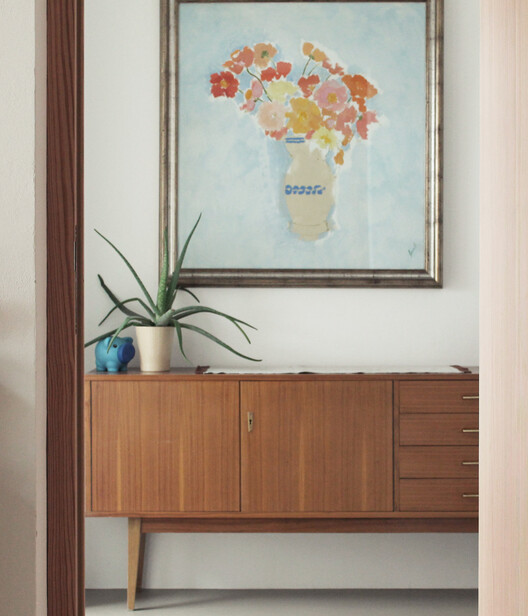
Materiality – The project includes a sustainable and local approach that selects local materials and design techniques that match tradition. The existing structure is preserved and reinforced, whereby plastered walls are treated in soft, natural pigments that harmonize with the surrounding landscape. The attic extension is dressed in Larch, a material that develops over time and records a silver -gray patina that reflects the continuous dialogue between architecture and nature. The balconies, also in Larch, refer to the Alpine district. This material selection is not only aesthetic – it expresses a deliberate intention to create an architecture that becomes part of the landscape in which every detail contributes to a larger story, historical stratification and dialogue with the territory.
